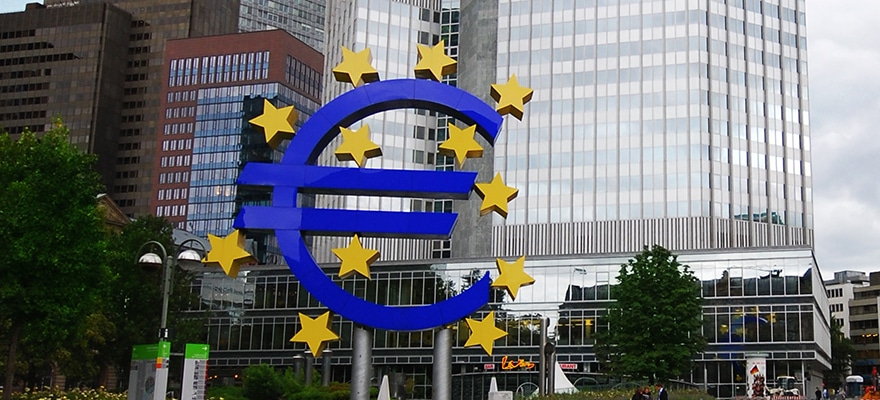Seven years after Robinhood launched with no-fee trading, almost all major brokerages have caught up with a wave of fee-eliminating announcements over the past year. More than a year after the change took place, it is worth taking a look at how the race to the bottom represented a major turning point in the retail trading industry.
The zero commissions, understandably, have driven up to 100% increases in trading volumes and helped incumbent brokers capitalize on a new class of retail investors. But, despite an influx of dummies and a dramatic spike in trading volume, the move will ultimately prove painful and the revenue give-up will not be easy in the long term.
The trading revenue did not take the hit so far as a drop in commissions was offset by record volumes. While retail investors may have increased their trading activity thanks partly to $0 commissions, the major factor behind record volumes was Corona-spurred market Volatility
Volatility
In finance, volatility refers to the amount of change in the rate of a financial instrument, such as commodities, currencies, or stocks, over a given time period. Essentially, volatility describes the nature of an instrument’s fluctuation; a highly volatile security equates to large fluctuations in price, and a low volatile security equates to timid fluctuations in price. Volatility is an important statistical indicator used by financial traders to assist them in developing trading systems. Trad
In finance, volatility refers to the amount of change in the rate of a financial instrument, such as commodities, currencies, or stocks, over a given time period. Essentially, volatility describes the nature of an instrument’s fluctuation; a highly volatile security equates to large fluctuations in price, and a low volatile security equates to timid fluctuations in price. Volatility is an important statistical indicator used by financial traders to assist them in developing trading systems. Trad
Read this Term and stay-at-home orders.
Sooner or later, brokers will feel the heat as economies re-open, people go back to work and volatility dies down. In other words, brokers may not see the explosive growth in 2021 that saved trading revenue in the previous year.
No-Commission Trades Are Part of the Intense Volumes’ Story, but COVID-19 Indeed Accounts for the Bulk of It.
If that happens, the move to zero commissions by industry players would require a larger shift in the business model for many of these low-cost brokerage firms.
From another standpoint, the new wave of retail investors brought by free trades was likely less experienced or simply playing. As such, there is potential here for these investors to leave the market as quickly as they came in.
Additionally, many high-flying apps are already facing regulators’ scrutiny over alleged failures to protect inexperienced investors while aggressively promoting its products to them.
Treating trading like a game and luring young customers to make more and more trades is not only unethical but also falls under the radar of regulatory concerns.
According to Massachusetts securities regulators, 68% of the state-based Robinhood customers had been authorised to trade options even after reporting limited or no investing expertise.
A Shift in Both Business and Transparency Models
How retail brokers were making up for the lost commission revenue has been the most burning question. As a matter of fact, there will never be a free lunch in the financial services industry.
Not surprisingly, brokers have an opaque bag of revenue streams. As such, they have become more focused on other sources like trading spreads, commissions in fixed income and other assets, margin lending fees, and a variety of other ticket charges. Further, they grew their ancillary businesses, such as research and advisory services and tried to benefit from diversifying their products portfolio.
Others in the industry now rely more on revenue from the so-called 'payment for order flow'. This involves selling customer trades to Market Makers
Market Makers
Market makers or called dealing desk brokers represent a type of broker that internalize flows and are taking the opposite side of a transaction submitted by their clients. The market making broker is only quoting a feed of prices to its clients. These feeds may or may not be the exact same as the prices quoted on the interbank market.Any order a client enters is processed internally and never goes out to the market, except in rare cases where a market making brokerage identifies a client as a v
Market makers or called dealing desk brokers represent a type of broker that internalize flows and are taking the opposite side of a transaction submitted by their clients. The market making broker is only quoting a feed of prices to its clients. These feeds may or may not be the exact same as the prices quoted on the interbank market.Any order a client enters is processed internally and never goes out to the market, except in rare cases where a market making brokerage identifies a client as a v
Read this Term and high-frequency trading firms, who pay millions for discount brokers because they can trade profitably against the orders.
However, this controversial practice resulted in lapses in brokers’ duty of getting the best execution price for their customer. Additionally, discount brokers charge their order takers a percentage of the spread on each trade they sell, which some critics say creates a conflict of interest. A bigger difference between the bid and asked price means customers do not get the best prices.
The US regulators have already fined State Street and Robinhood over its failure to fully disclose this practice. The no-fee app paid $65 million in the most prominent and noteworthy case of this market practice, which had reportedly deprived customers of $34.1 million even after taking into account the savings from not paying a commission.
Outside the US, the British regulator FCA put the industry on notice and voiced concerns on a lack of structure, conflicts of interest and reduced competition to UK retail brokers.
The Emergence of New Trends Such as Fractional Trading
As mentioned above, millennial-favored investment app Robinhood has turned the stock-trading business on its head. But, the old-school brokers have been also fighting back. Not only catching up with the wave of allowing investors to trade without fees but they have been enhancing their offering to attract digitally savvy and younger investors.
Additionally, Robinhood kicked off the trend of offering its customers the ability to buy and sell fractional shares with as little as $1. However, the trend was first introduced by start-ups like Square, but Robinhood’s adoption made the noise as the app tried to continue to woo its younger investors, which exploded to more than 13 million.
The 'fractional stock' feature allows small-bucks investors to diversify their portfolios by spreading their relatively small capital over a broader range of stocks.
Shortly after, the incumbent brokers jumped on the bandwagon. TD Ameritrade and eTrade quickly matched Schwab, and Fidelity followed suit a month later. All these platforms are seeing a steady uptick in the product’s adoption among their clients.
Seven years after Robinhood launched with no-fee trading, almost all major brokerages have caught up with a wave of fee-eliminating announcements over the past year. More than a year after the change took place, it is worth taking a look at how the race to the bottom represented a major turning point in the retail trading industry.
The zero commissions, understandably, have driven up to 100% increases in trading volumes and helped incumbent brokers capitalize on a new class of retail investors. But, despite an influx of dummies and a dramatic spike in trading volume, the move will ultimately prove painful and the revenue give-up will not be easy in the long term.
The trading revenue did not take the hit so far as a drop in commissions was offset by record volumes. While retail investors may have increased their trading activity thanks partly to $0 commissions, the major factor behind record volumes was Corona-spurred market Volatility
Volatility
In finance, volatility refers to the amount of change in the rate of a financial instrument, such as commodities, currencies, or stocks, over a given time period. Essentially, volatility describes the nature of an instrument’s fluctuation; a highly volatile security equates to large fluctuations in price, and a low volatile security equates to timid fluctuations in price. Volatility is an important statistical indicator used by financial traders to assist them in developing trading systems. Trad
In finance, volatility refers to the amount of change in the rate of a financial instrument, such as commodities, currencies, or stocks, over a given time period. Essentially, volatility describes the nature of an instrument’s fluctuation; a highly volatile security equates to large fluctuations in price, and a low volatile security equates to timid fluctuations in price. Volatility is an important statistical indicator used by financial traders to assist them in developing trading systems. Trad
Read this Term and stay-at-home orders.
Sooner or later, brokers will feel the heat as economies re-open, people go back to work and volatility dies down. In other words, brokers may not see the explosive growth in 2021 that saved trading revenue in the previous year.
No-Commission Trades Are Part of the Intense Volumes’ Story, but COVID-19 Indeed Accounts for the Bulk of It.
If that happens, the move to zero commissions by industry players would require a larger shift in the business model for many of these low-cost brokerage firms.
From another standpoint, the new wave of retail investors brought by free trades was likely less experienced or simply playing. As such, there is potential here for these investors to leave the market as quickly as they came in.
Additionally, many high-flying apps are already facing regulators’ scrutiny over alleged failures to protect inexperienced investors while aggressively promoting its products to them.
Treating trading like a game and luring young customers to make more and more trades is not only unethical but also falls under the radar of regulatory concerns.
According to Massachusetts securities regulators, 68% of the state-based Robinhood customers had been authorised to trade options even after reporting limited or no investing expertise.
A Shift in Both Business and Transparency Models
How retail brokers were making up for the lost commission revenue has been the most burning question. As a matter of fact, there will never be a free lunch in the financial services industry.
Not surprisingly, brokers have an opaque bag of revenue streams. As such, they have become more focused on other sources like trading spreads, commissions in fixed income and other assets, margin lending fees, and a variety of other ticket charges. Further, they grew their ancillary businesses, such as research and advisory services and tried to benefit from diversifying their products portfolio.
Others in the industry now rely more on revenue from the so-called 'payment for order flow'. This involves selling customer trades to Market Makers
Market Makers
Market makers or called dealing desk brokers represent a type of broker that internalize flows and are taking the opposite side of a transaction submitted by their clients. The market making broker is only quoting a feed of prices to its clients. These feeds may or may not be the exact same as the prices quoted on the interbank market.Any order a client enters is processed internally and never goes out to the market, except in rare cases where a market making brokerage identifies a client as a v
Market makers or called dealing desk brokers represent a type of broker that internalize flows and are taking the opposite side of a transaction submitted by their clients. The market making broker is only quoting a feed of prices to its clients. These feeds may or may not be the exact same as the prices quoted on the interbank market.Any order a client enters is processed internally and never goes out to the market, except in rare cases where a market making brokerage identifies a client as a v
Read this Term and high-frequency trading firms, who pay millions for discount brokers because they can trade profitably against the orders.
However, this controversial practice resulted in lapses in brokers’ duty of getting the best execution price for their customer. Additionally, discount brokers charge their order takers a percentage of the spread on each trade they sell, which some critics say creates a conflict of interest. A bigger difference between the bid and asked price means customers do not get the best prices.
The US regulators have already fined State Street and Robinhood over its failure to fully disclose this practice. The no-fee app paid $65 million in the most prominent and noteworthy case of this market practice, which had reportedly deprived customers of $34.1 million even after taking into account the savings from not paying a commission.
Outside the US, the British regulator FCA put the industry on notice and voiced concerns on a lack of structure, conflicts of interest and reduced competition to UK retail brokers.
The Emergence of New Trends Such as Fractional Trading
As mentioned above, millennial-favored investment app Robinhood has turned the stock-trading business on its head. But, the old-school brokers have been also fighting back. Not only catching up with the wave of allowing investors to trade without fees but they have been enhancing their offering to attract digitally savvy and younger investors.
Additionally, Robinhood kicked off the trend of offering its customers the ability to buy and sell fractional shares with as little as $1. However, the trend was first introduced by start-ups like Square, but Robinhood’s adoption made the noise as the app tried to continue to woo its younger investors, which exploded to more than 13 million.
The 'fractional stock' feature allows small-bucks investors to diversify their portfolios by spreading their relatively small capital over a broader range of stocks.
Shortly after, the incumbent brokers jumped on the bandwagon. TD Ameritrade and eTrade quickly matched Schwab, and Fidelity followed suit a month later. All these platforms are seeing a steady uptick in the product’s adoption among their clients.





















